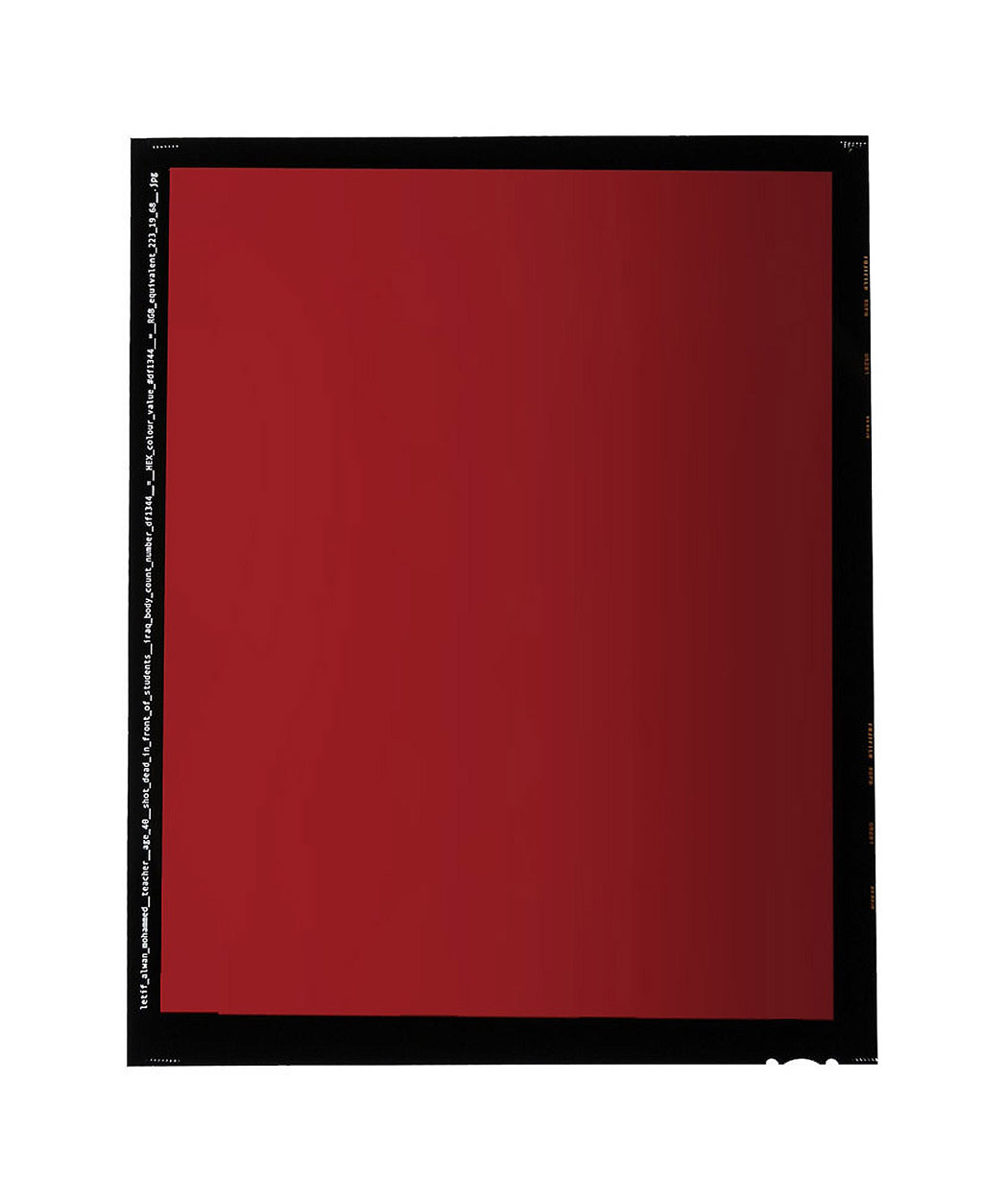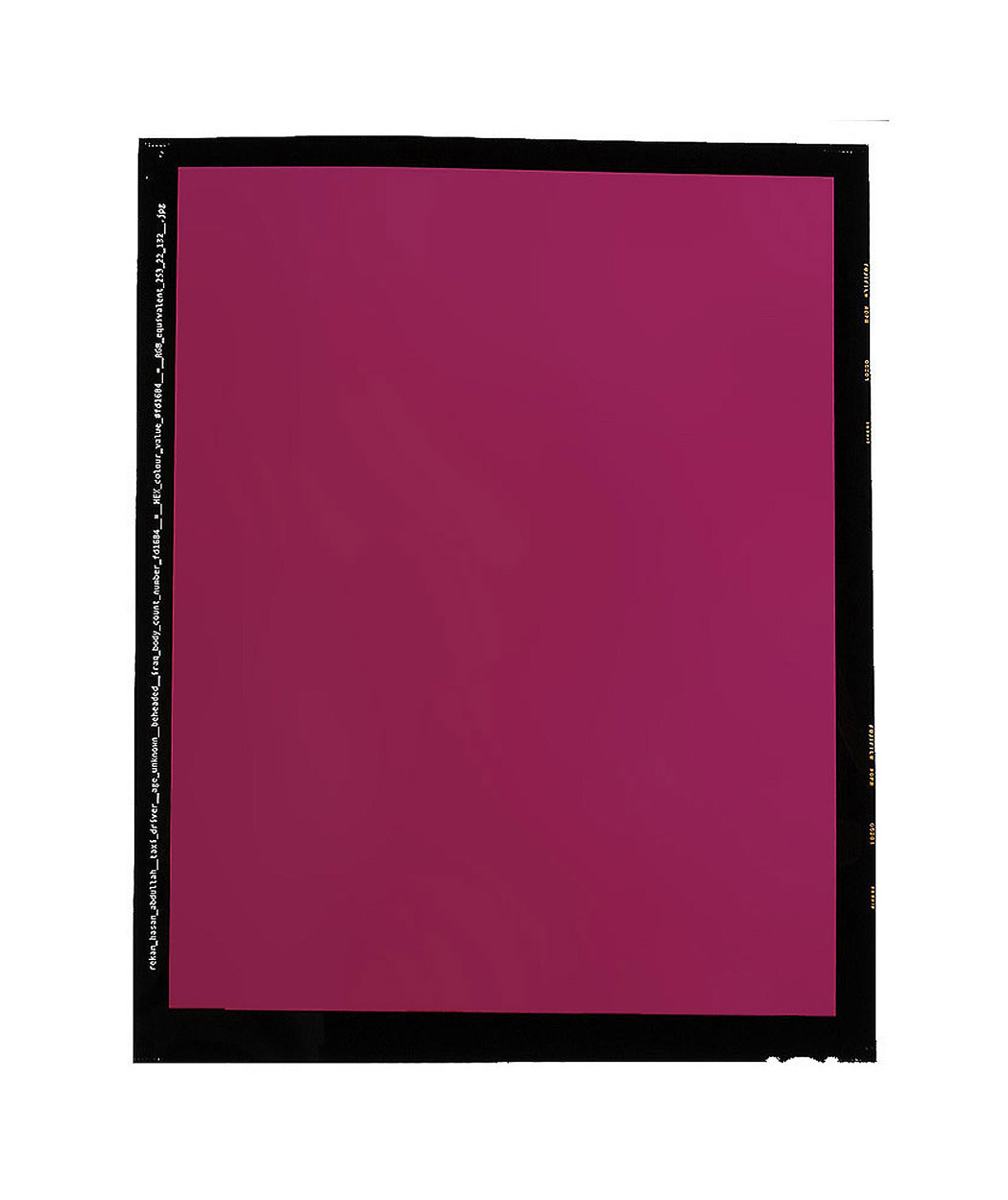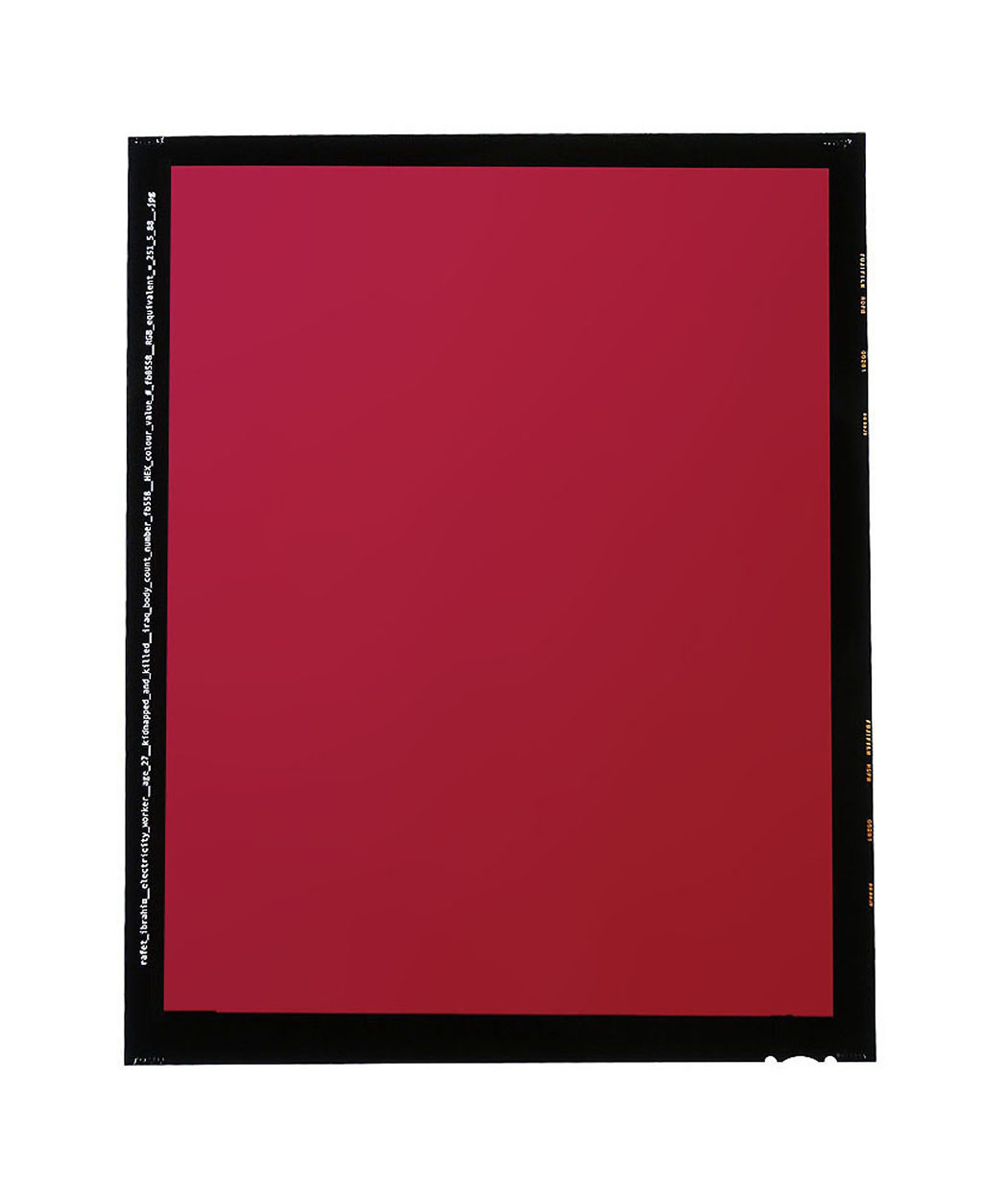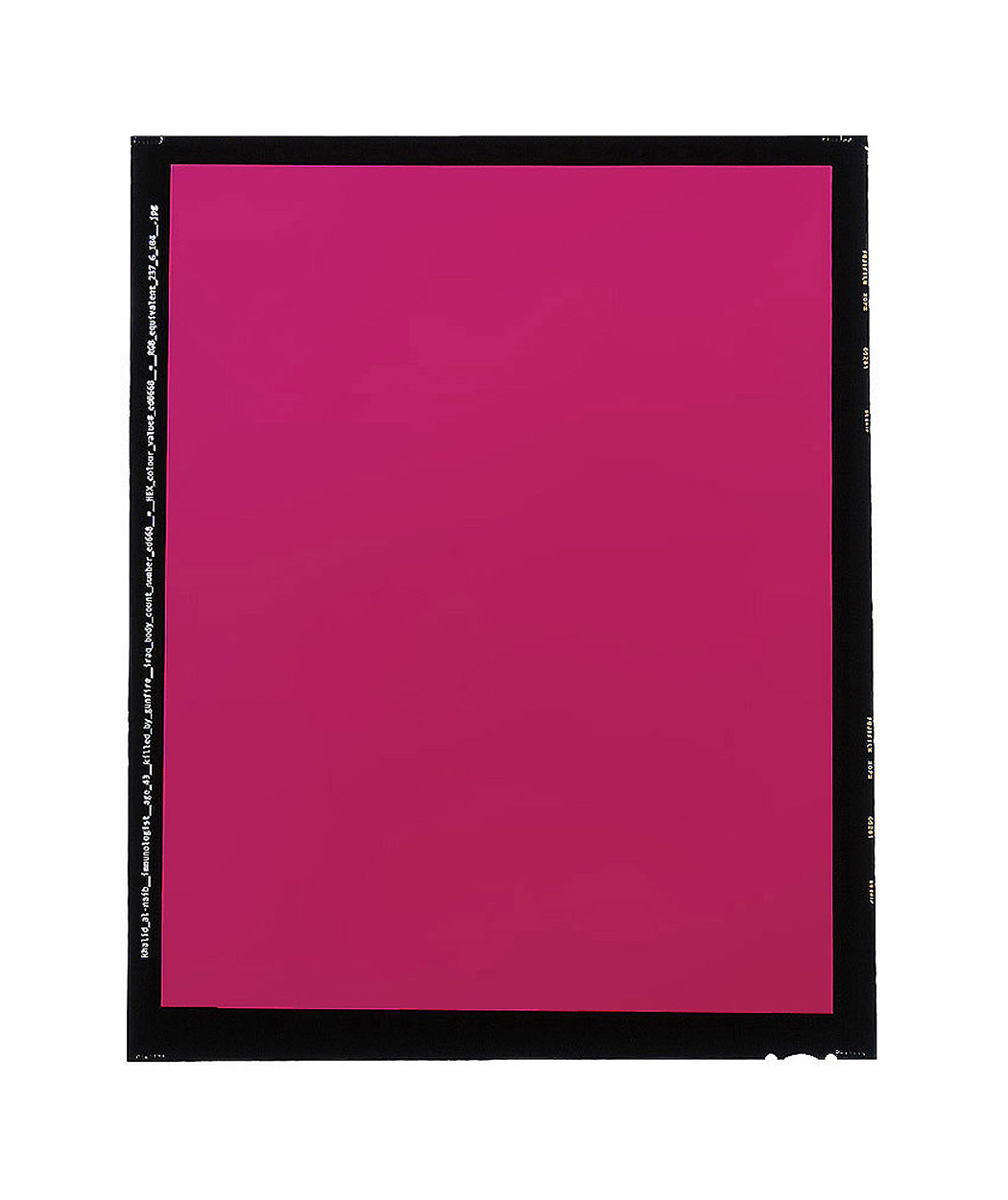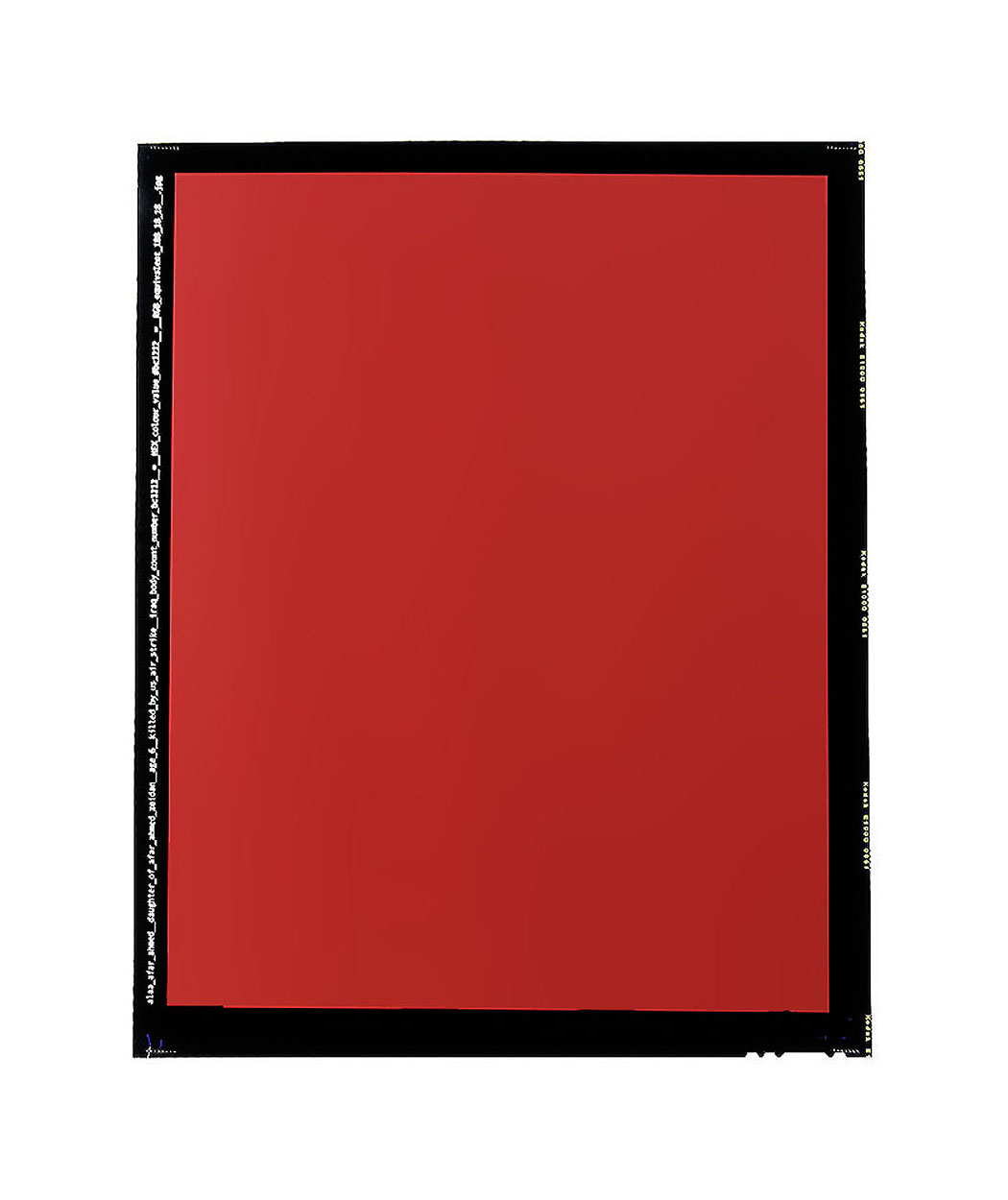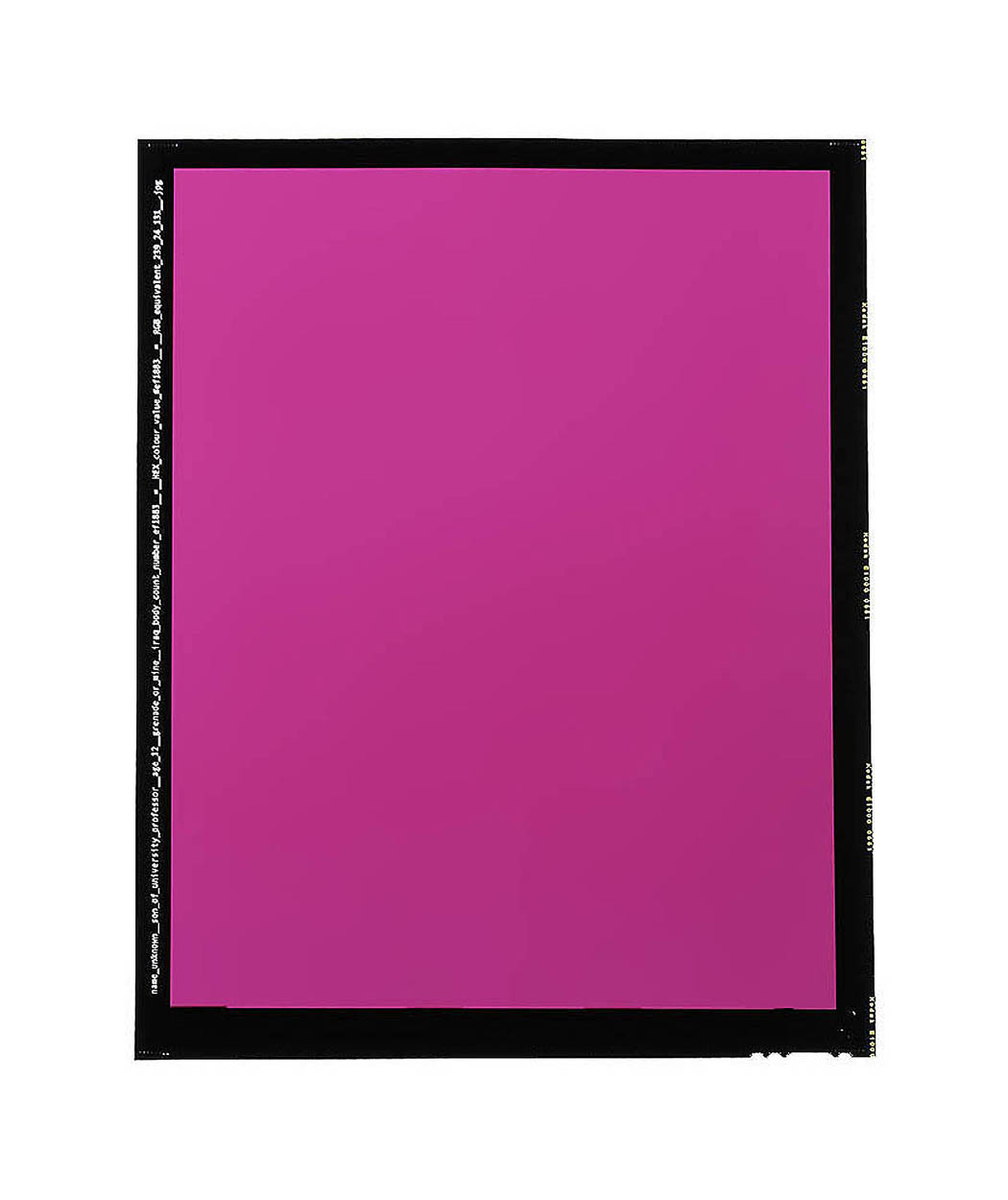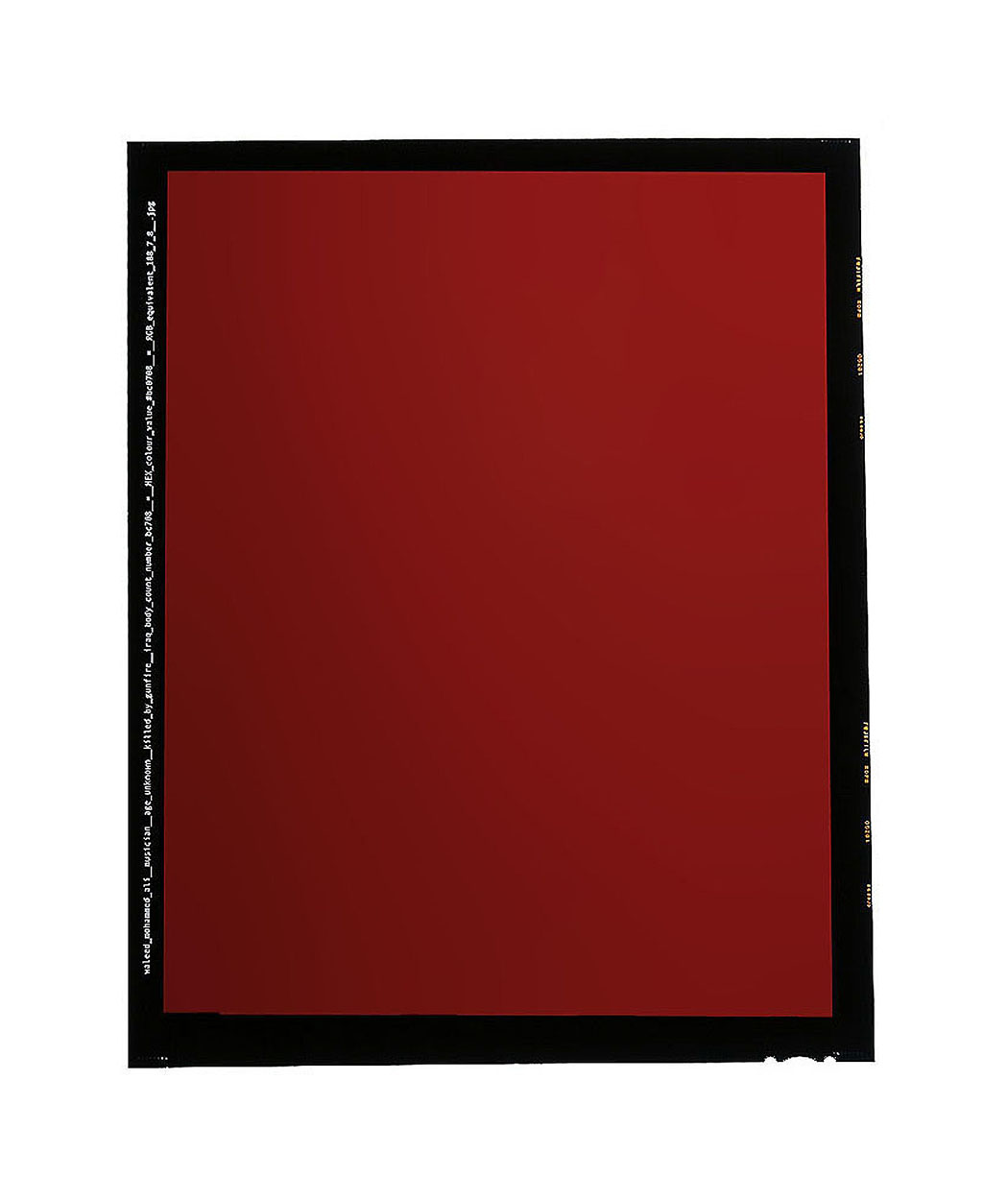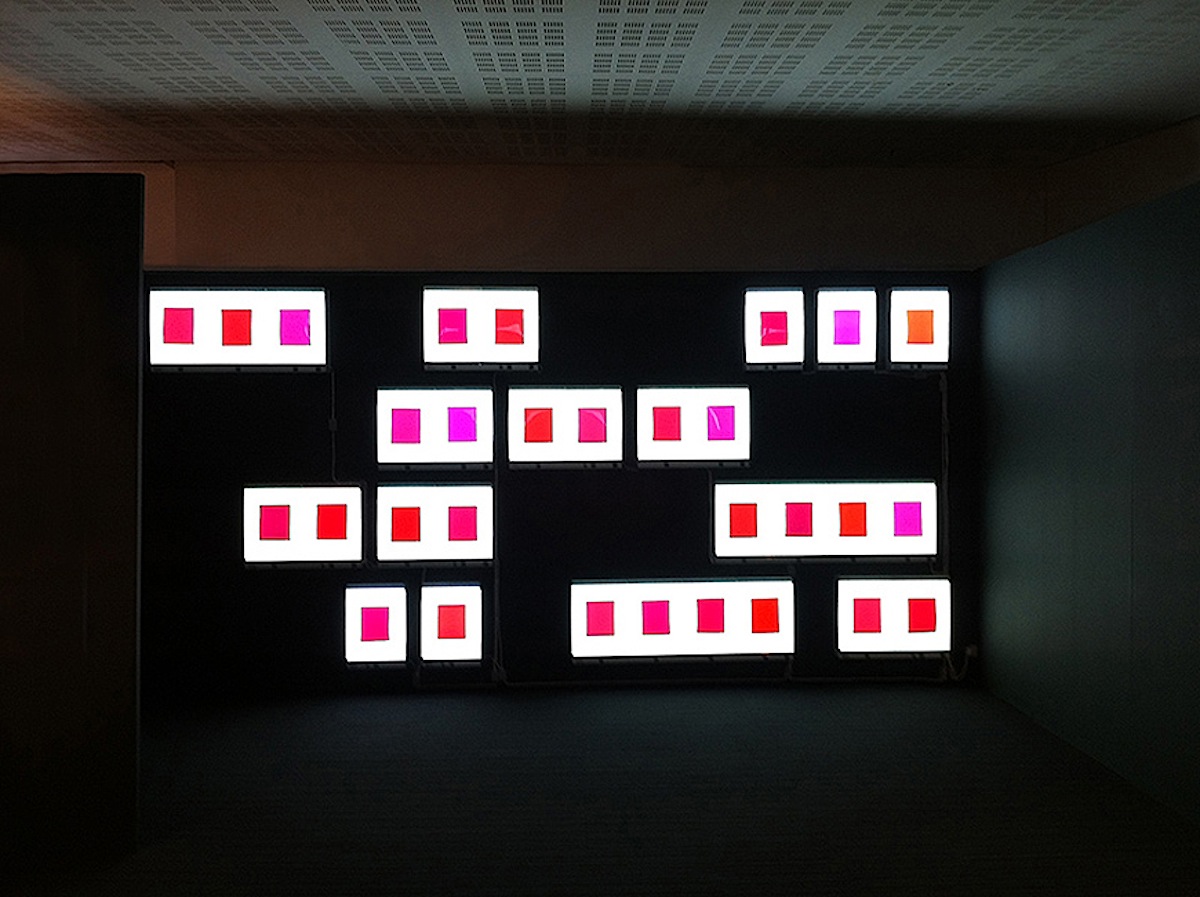PROFILES, 2012
Profiles addresses the relationship between spectacle and loss in photojournalism. Sidestepping the representational remit of conventional war photography, it reflects on the visibility of civilian casualties of the Iraq War and the paucity of such images.
The process involved inserting identification numbers from the Iraqi civilian casualty database into photographic software to generate a chromatic 'value' for each person. The colors were than exposed onto 8 x 10 inch transparencies and displayed on discarded X-ray light boxes from British and American hospitals. The individual's name, age, occupation and cause of death are contained within the JPEG filename and inscribed along the film’s edge:
alaa_afar_ahmed__daughter_of_afar_ahmed_zeidan__age_6__killed_by_us_air_strike__iraq_body_count_number_bc1212__
=__HEX_color_value__#bc1212__=__RGB_equivalent_188_18_18__.jpg
ahmad_amer_ibrahim__furnture_shopkeeper__age_19__drive-by_shooting__iraq_body_count_number__eb1801__
=__HEX_colour_value__#eb1801__=__RGB_equivalent_235_16_1__.jpg
letif_alwan_mohammed__teacher__age_40__shot_dead_in_front_of_students__iraq_body_count_number_df1344__
=__HEX_colour_value_#df1344__=__RGB_equivalent_223_19_68__.jpg
As a series of failed photographs, these monochrome portraits point to blanks in the visual record.
Profiles, 2012. Photographic transparencies on discarded hospital X-ray light boxes; 8 x 10 inches each.
"…a national melancholia, understood as a disavowed mourning, follows upon the erasure from public representations of the names, images, and narratives of those the US has killed. On the other hand, the US’s own losses are consecrated in public obituaries that constitute so many acts of nation-building. […] The differential allocation of grievability that decides what kind of subject is and must be grieved, and which kind of subject must not, operates to produce and maintain certain exclusionary conceptions of who is normatively human: what counts as a livable life and a grievable death?"
Judith Butler
